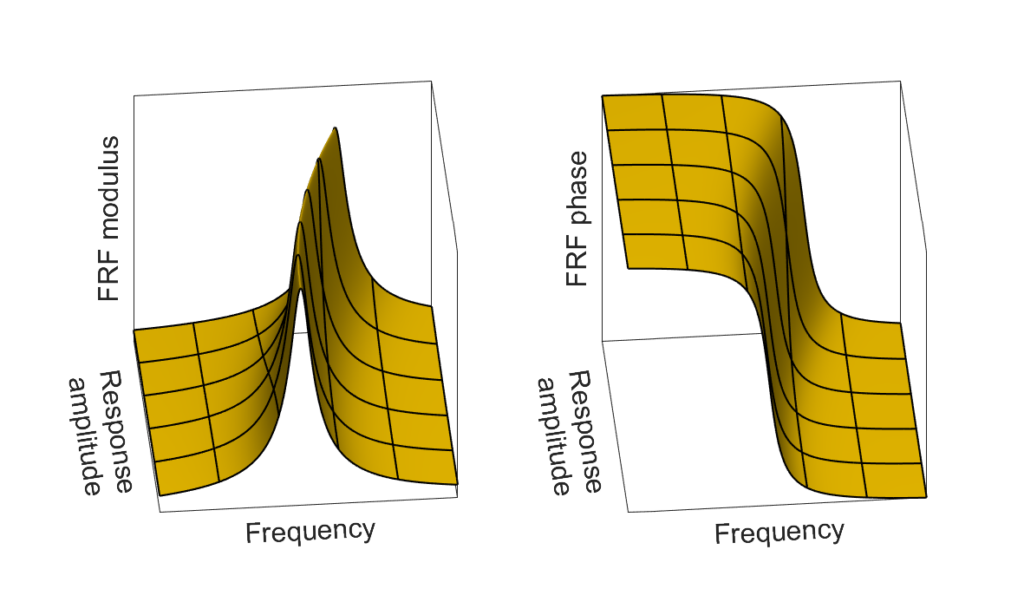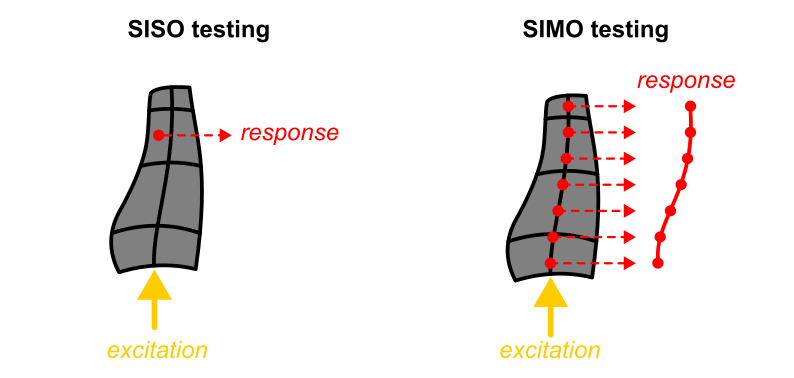The response of mechanical systems and materials is intrinsically nonlinear under high response amplitudes. Understanding these nonlinearities allows us to precisely condition our fatigue tests. Furthermore, using our nonlinear system identification technology we can track the loss of system or material performance due to accumulated fatigue damage.
Nonlinear structural dynamics

Instead of a single frequency response function (FRF) that characterizes linear systems, for nonlinear systems the response is amplitude-dependent. Therefore, the forced vibration response of nonlinear systems is characterized by a nonlinear frequency response surface. Knowledge of this surface unlocks enhanced testing strategies and performance evaluations.
Nonlinear system parameters are identified from frequency response function (FRF) data, using the nonlinear frequency response surface concept. Both single-input single-output (SISO) and single-input multiple-output (SIMO) data can be processed. While SISO tests are sufficient to determine the nonlinear natural frequency and damping backbones, a SIMO test can additionally reveal mode shapes that might be amplitude-dependent.

Nonlinear system identification
From experimental FRFs, a nonlinear response model is identified.
Conditioning for fatigue tests
Being able to identify how system parameters change over vibration amplitude as well as over time, ensures the right loads are applied during fatigue testing.
Performance evaluation
The accumulation of fatigue damage can degrade the system or material performance over time. Our nonlinear system identification technology is able to characterize this degradation.
